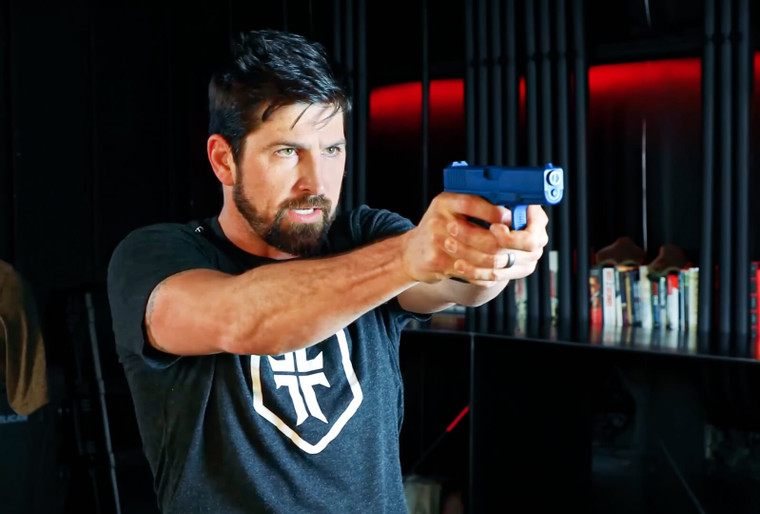Build a Simple, Do-Anywhere Dry Fire Routine
Posted by Warrior Poet Society on Aug 2nd 2024
When I (John Lovell) think about dry fire drills, I think about the Romans and Spartans and how they would train constantly, pushing themselves to the limit on a daily basis. I also realize it’s sometimes not practical for most of us to go into full training mode from sunrise to sunset like the ancient warrior societies. It’s important though to find simple ways to practice your skill and get your dry fire training reps in throughout the day.
Dry fire practice is an essential part of firearms training because it teaches you to maneuver and operate your weapon in those awkward, real-world situations when real attackers do unexpected things to take you down.
So this doesn't mean you need to get up at 2:30 every morning to get your dry fire drills in. I certainly don't.
I get up, get dressed in whatever I want to wear, and I practice dry fire in a variety of clothing configurations. This adds variables that allow me to get a feel for tactics no matter the situation.
Create a No-Live Zone
Dry fire drills can be practiced almost anywhere to build muscle memory for drawing and presenting your weapon(s)--both pistol and rifle–without the expense or danger of using live ammunition. It’s all about making the most of your time, creating and ensuring you are always prepared.
Because bullets don’t stop when they travel through walls, it’s important to make sure there are no live rounds in your gun or in the room when you begin to practice dry fire drills.
I understand that many of us might want to use our actual handguns for dry fire practice, so it's extra important to ensure that whatever you’re aiming at is not a person.
To avoid all this, it’s not a bad idea to have a dummy gun dedicated to these drills. Establishing a dedicated dry fire area where no live ammo or live guns are allowed can significantly reduce the risk of accidents.
Options for practice areas include "No live ammo, no live guns" zones or safe corners in the house where you can ensure safety. Using tools like airsoft guns, cert guns, and blue guns can provide a realistic training experience while maintaining a high level of safety.
Practice Draw Strokes
When practicing your draw strokes, it’s important to recognize that each wardrobe change presents different challenges.
Whether you’re wearing a jacket, sweater, polo, or T-shirt, each outfit can affect your draw stroke. Start by slowly practicing your draw in various types of clothing to identify and overcome potential challenges.
Begin with a slow, deliberate draw, then gradually increase your speed as you become more comfortable. This helps ensure that you can perform an effective draw under any circumstances.
RELATED LINKS | Dealing with Double Feed Problems • Why You Should Own a Glock • Pistol Drills • Pistol Combatives
Advanced Dry Fire Drills
Once you’re comfortable with basic draw strokes, it’s time to move on to more advanced dry fire drills. Because bad guys don’t always behave in predictable ways, target transitions are crucial for improving your speed and accuracy in shifting focus between different targets.
For example, you can pick targets like a picture frame, ammo can, clock, or light socket. Practice transitioning your aim smoothly and quickly between these targets, ensuring that you can acquire each one efficiently with control.
Practicing weapon manipulations helps establish real-world responses that require ready-ups, shoulder transitions, and navigating obstacles when handling your rifles. By practicing from different compressed positions, you can simulate moving around obstacles in a real-world scenario.
This includes one-handed draws. Mastery of one-handed draws prepares you for defending yourself while using your other hand for another task such fending off an attacker and creating distance.
Practice drawing one-handed by mimicking your response to a surprise attacker and drawing your firearm without getting hung up in your clothes. This'll help build the necessary reaction speed and precision to act effectively in high-stress situations.
Developing a daily, slowly progressive dry fire routine will create a life-saving habit that'll teach you how to response instinctively, quickly, and with precision.
As with any training regimen, it's critical that you train consistently with good technique.
Train Hard. Train Smart. Live Free. Train Consistently.

